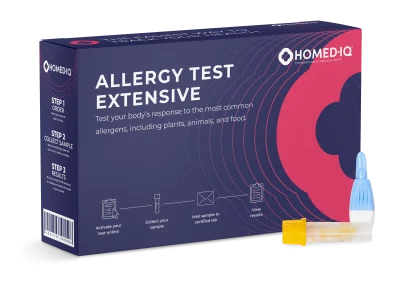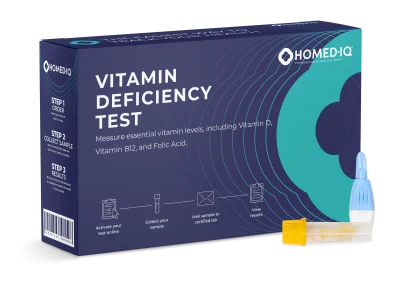Gluten is a protein found in many grain products. Other than naturally occurring in certain grains, gluten is often extracted and added to other foods to add texture or thicken them. Most people can consume gluten with no problems. However, in some people it can cause adverse effects, also known as gluten intolerance. Gluten intolerance is an umbrella term for all health conditions involving a reaction to gluten, including celiac disease, gluten sensitivity, and wheat allergy (Harvard Health, 2023). In people with gluten intolerance, the body is hypersensitive to gluten, which can lead to physical symptoms that range from mild to severe. If you suspect you may have a gluten intolerance it is important to know the different types and the various symptoms associated with them. Read on to learn more.
What is gluten?
Gluten is a protein found in wheat, rye, barley, and triticale (a cross between rye and barley). Oats do not naturally contain gluten, unless they were processed with other gluten-containing foods (Johns Hopkins, 2023). The most common sources of gluten are products made from wheat flour, or sauces that have had gluten added as a thickening agent. The following foods contain gluten:
- Wheat: bread, cakes, soup, pasta, breakfast cereals, sauces, and dressings.
- Barley: malt, dyes, soups, beer, and brewer’s yeast.
- Rye: Rye bread and breakfast cereals.
Many non-food products may also contain gluten, such as lip balm and lipstick, toothpaste, vitamin supplements, and in rare cases, medications (NIH, 2020).
What are the different types of gluten intolerance?
Gluten intolerance can be grouped into three categories: Celiac disease, gluten sensitivity, and wheat allergy. These intolerances can cause similar symptoms, which means they can be often confused. However, there are key differences in how each intolerance occurs and the potential long-term effects on the body.
Celiac disease
Celiac disease is a chronic autoimmune disease that occurs after eating gluten. In people with celiac disease, eating gluten causes the immune system to attack the small intestine, damaging it over time and limiting its ability to absorb nutrients. This is called malabsorption and can lead to malnutrition and other health problems due to a lack of nutrients. The intestinal damage from celiac disease can cause symptoms including:
- Diarrhea
- Stomach pain
- Bloating
- Fatigue
- Constipation
- Nausea and vomiting
Many adults with celiac disease also experience symptoms that have nothing to do with the digestive system and are particularly due to the lack of nutrient absorption. These include:
- Anemia, usually due to iron deficiency
- Loss of bone density (osteoporosis) or softening of the bones (osteomalacia)
- Itchy, blistered skin rashes (dermatitis herpetiformis)
- Headache, fatigue and tiredness
- Numbness and tingling in feet and hands, possible balance problems and cognitive impairment
- Joint pain
Source: Mayo Clinic, 2021
Untreated celiac disease also contributes to chronic inflammation in the body, a condition associated with lowered immunity, the development of additional food intolerances, other diseases of the intestines, liver disease, and cancer (Cleveland Clinic, 2022). Research suggests that celiac disease is a genetic disease that runs in families (NIDDK, 2020).
Gluten sensitivity
Non-celiac gluten sensitivity (NCGS) can cause symptoms similar to those of celiac disease. In contrast to celiac disease, gluten sensitivity does not involve an autoimmune reaction and does not damage the small intestine. As such, the cause and mechanism of gluten sensitivity and its symptoms is not entirely clear (NIDDK, 2020). However, it is believed that although NCGS is triggered by gluten-containing grains, components other than gluten itself may be the trigger, such as the grain protein amylase trypsin inhibitors (Catassi et al., 2015).
The most common symptoms of gluten intolerance include:
- Bloating
- Abdominal cramping
- Diarrhea or constipation
- Nausea and vomiting
- Fatigue
- Balance problems
- Difficulty concentrating
- Depression
- Headaches
Source: Cleveland Clinic, 2021
Wheat allergy
A wheat allergy is an immune system response to one or more proteins found in wheat. Wheat allergies can occur against all four classes of wheat proteins – albumin, globulin, gliadin, or gluten. An allergy occurs when the body mistakes one of the proteins in wheat as harmful and releases antibodies to fight against it. Just as in celiac disease, wheat allergies involve an immune system reaction. In this case, the reaction is directed against the proteins found in wheat rather than against the body itself, which is known as an autoimmune response.
Wheat allergies are most common in babies and toddlers as they have immature immune and digestive systems. Approximately two-thirds of people with wheat allergies outgrow the allergy by age 12 (Cleveland Clinic, 2022). Although the symptoms of wheat allergy are similar to celiac disease and gluten sensitivity, additional symptoms specific to the allergic response may also occur during an allergic reaction to wheat. These can vary greatly in severity from person to person and can include:
- Swelling, itching or irritation of the mouth or throat.
- Hives, itchy rash or swelling of the skin
- Nasal congestion
- Headache
- Difficulty breathing
- Cramps, nausea, or vomiting
- Diarrhea
- Anaphylaxis (less common)-a life-threatening reaction that can affect breathing and send the body into shock
Source: Mayo Clinic, 2022
How is gluten intolerance diagnosed?
Diagnosing gluten intolerance begins with a trip to the doctor. The doctor will examine your symptoms and medical history before follow-up testing. The process of diagnosing a specific gluten intolerance involves ruling out other intolerances one by one.
Step 1:
The first step is to rule out celiac disease. Three tests can be used to do this. First, a blood test can be done to check for gluten antibodies (anti-TTG IgA & IgA) which damage your intestines. It is important that you eat foods containing gluten before this test to ensure the test results are accurate. If this test is positive, your doctor may want to examine the damage to your intestine. This may involve taking a small tissue sample from your small intestine (biopsy) to examine under a microscope (Cleveland Clinic, 2022). Because celiac disease is a genetic disorder, genetic testing for human leukocyte antigens (HLA-DQ2 and HLA-DQ8) can also be used (Mayo Clinic, 2021).
Step 2:
If testing for celiac disease is negative, the second step can be checking for a wheat allergy. For this, a skin prick test can be used in which tiny drops of allergen extracts – such as an extract of wheat proteins – are pricked onto the surface of the skin. The doctor will then check for signs of an allergic reaction, which may take the form of a red, itchy bump. A blood test can also be used to diagnose a wheat allergy, for example, when a skin test is not possible due to a skin condition. A blood test checks the blood for specific allergy-causing antibodies to common allergens, including wheat proteins (Mayo Clinic, 2022).
Step 3:
If you have neither a wheat allergy nor celiac disease, your doctor may ask you to perform an elimination diet. This begins with avoiding gluten for at least six weeks. During this time, it is advised to note what symptoms you have and whether any improvement occurs. If your symptoms improve while on the gluten-free diet, it is often advised to begin consuming gluten again. If symptoms return, this may be an indicator of gluten intolerance (Cleveland Clinic, 2021).
Would you like to rule out celiac disease as a potential cause of your symptoms? Homed-IQ’s Celiac Disease Test reliably detects antibodies (anti-TTG IgA & IgA) in your blood that indicate celiac disease. This test can be performed in the comfort of your own home. You can also check your vitamin levels with the Vitamin Deficiency Test, which measures the levels of vitamin B12, vitamin D, and folic acid (vitamin B9) in your blood. Homed-IQ’s extensive allergy test offers an accurate way to detect wheat allergy at an early stage. The test uses a blood sample to identify specific IgE antibodies produced against certain allergens, such as wheat.
-

Allergy Test Extensive
€239,00 -

Vitamin Deficiency Test
€65,00
How is gluten intolerance treated?
If you have been diagnosed with one of the three forms of gluten intolerance, your doctor will advise you on what treatment is appropriate. While most gluten intolerances are treated by eating a gluten-free diet, other treatments may depend on the symptoms you experience and their severity.
Treatment for celiac disease
If you have been diagnosed with celiac disease, you will need to follow a gluten-free diet for life. This is a big change for many people, as you may need to make significant changes in your eating habits. This means checking foods and condiments for gluten and learning which foods are gluten-free. In many countries it is required for food manufacturers to list whether their products contain gluten in the ingredients list, which can make it easier for people with celiac disease to avoid gluten-containing foods.
Symptoms of celiac disease usually improve significantly after beginning a gluten-free diet, usually within a few days or weeks. For most people, a gluten-free diet heals the damage to the small intestine and prevents further damage and health problems. Because celiac disease is often associated with nutrient deficiencies, your doctor may also prescribe supplements to replenish your vitamin and nutrient levels after appropriate testing (NIDDK, 2020).
Treatment for gluten intolerance
A gluten-free diet is also considered the treatment of choice for gluten intolerance. Additionally, probiotics can be added to your diet as they support your gut, reducing symptoms of gas, bloating, and constipation (Cleveland Clinic, 2021).
Treatment for wheat allergies
Avoiding foods with wheat and wheat proteins is the best way to avoid the symptoms of a wheat allergy. However, because wheat proteins are present in many foods, medications such as antihistamines can provide relief if wheat is consumed. Before taking antihistamines, you should consult a doctor to determine which medication is appropriate for you. For people who have wheat allergies that cause anaphylaxis, it is recommended to carry epinephrine (Epi-Pen) as an emergency medication (Mayo Clinic, 2022).
Conclusion
Gluten intolerance is an umbrella term for several conditions that can have a variety of symptoms. If you are experiencing symptoms that could indicate a gluten intolerance, it is recommended to see a doctor. The doctor can help identify the type of intolerance you have and provide follow-up testing and treatment.
References
Catassi, C., Elli, L., Bonaz, B., Bouma, G., Carroccio, A., Castillejo, G., Cellier, C., Cristofori, F., de
Magistris, L., Dolinsek, J., Dieterich, W., Francavilla, R., Hadjivassiliou, M., Holtmeier, W., Körner, U., Leffler, D. A., Lundin, K. E., Mazzarella, G., Mulder, C. J., Pellegrini, N., … Fasano, A. (2015). Diagnosis of Non-Celiac Gluten Sensitivity (NCGS): The Salerno Experts’ Criteria. Nutrients, 7(6), 4966–4977. https://doi.org/10.3390/nu7064966
Celiac disease – Diagnosis and treatment. (2021, August 10). Mayo Clinic. Retrieved May 16, 2023, from https://www.mayoclinic.org/diseases-conditions/celiac-disease/diagnosis-treatment/drc-20352225
Celiac Disease, Sensitivity or Allergy? (2022, August 31). Cleveland Clinic Health Essentials. Retrieved May 14, 2023, from https://health.clevelandclinic.org/gluten-sensitivity-celiac-disease-wheat-allergy-differences/
Celiac disease – Symptoms and causes. (2021, August 10). Mayo Clinic. Retrieved May 16, 2023, from https://www.mayoclinic.org/diseases-conditions/celiac-disease/symptoms-causes/syc-20352220
Celiac Disease: Symptoms & How It’s Treated. (2022, December 1). Cleveland Clinic. Retrieved May 16, 2023, from https://my.clevelandclinic.org/health/diseases/14240-celiac-disease
Definition & Facts for Celiac Disease – NIDDK. (n.d.). National Institute of Diabetes and Digestive and Kidney Diseases. Retrieved May 14, 2023, from https://www.niddk.nih.gov/health-information/digestive-diseases/celiac-disease/definition-facts
Definition & Facts for Celiac Disease – NIDDK. (n.d.). National Institute of Diabetes and Digestive and Kidney Diseases. Retrieved May 14, 2023, from https://www.niddk.nih.gov/health-information/digestive-diseases/celiac-disease/definition-facts
Gluten Intolerance | BeyondCeliac.org. (n.d.). Beyond Celiac. Retrieved May 16, 2023, from https://www.beyondceliac.org/gluten-intolerance/
Gluten Intolerance: Symptoms, Test, Non-Celiac Gluten Sensitivity. (2021, June 30). Cleveland Clinic. Retrieved May 14, 2023, from https://my.clevelandclinic.org/health/diseases/21622-gluten-intolerance
Non-celiac gluten sensitivity. (2014, December 28). Harvard Health. Retrieved May 16, 2023, from https://www.health.harvard.edu/digestive-health/non-celiac-gluten-sensitivity
Treatment for Celiac Disease – NIDDK. (n.d.). National Institute of Diabetes and Digestive and Kidney Diseases. Retrieved May 16, 2023, from https://www.niddk.nih.gov/health-information/digestive-diseases/celiac-disease/treatment
What Is Gluten and What Does It Do? (n.d.). Johns Hopkins Medicine. Retrieved May 14, 2023, from https://www.hopkinsmedicine.org/health/wellness-and-prevention/what-is-gluten-and-what-does-it-do






